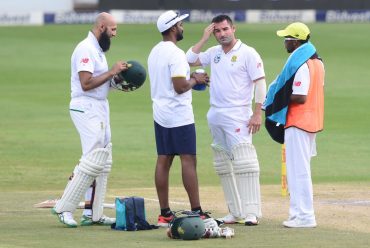Achilles Tendon Ruptures
Recently we learnt about the sad news of a South African cricketer, who ruptured his Achilles Tendon in Australia. Many may ask how and why this may occur:
The Achilles Tendon is a thick tissue which connects the calf muscle to the heel. The calf is a powerful lower limb muscle made up of the outer Gastronemuis and the underlying Solues. When these muscles contract, they pull on the Achilles, which moves the ankle downwards and hence resists it from too much upward movement. Due to this function it is important for walking, climbing and sprinting.
Whilst an individual performs all his activities, a tremendous load and force is placed on the thick and sturdy tendon. Hence putting it at risk to several different problems.
The Achilles Tendon can be violently ruptured (completely torn), even when strong and healthy. The injury occurs when the ankle is violently forced upwards, when ones foot is resisting by pushing the ankle downwards. A rupture can also occur when the knee is forcefully straightened while the ankle is flexed upward. When a rupture occurs, the individual normally feels a sensation of being kicking from behind, on the calf area. Bystanders may often hear a loud snap.
A chronic strain or significant injury, does not always cause a rupture. Diseases, such as, Rheumatoid Arthritis, Lupus, gout and TB can result in weakness in the area and hence rupture. The use of long term steroid medication for inflammation or the injection of cortisone in the tendon, can also weaken the fibers, and could result in a rupture. Research over the years, state that individuals between the ages of 40-50 are more prone to ruptures compared to those that are younger.
The treatment of a rupture, requires surgical intervention. Surgery consists of bringing the ruptured two ends together to a position were they are touching. The ruptured ends are stitched together by a strong non-absorbing suture and the ankle is then locked into a position for 8 weeks to allow healing and the ends to unite. It is extremely important that the surgery is not delayed , as the tendon can retract up toward the calf hence widening the gap between the two ends.
Patients would then be placed into a brace for 8 weeks and would be asked to use crutches as to not place any weight through the ankle, thus allowing the two ends to heal together. Rehabilitation is a slow process and will take an individual 4-8 months to recover completely. As like a Mensical Repair, the Achilles Tendon has very poor blood flow, and healing takes much longer. If healing does not occur properly and the individual is rushed into play, re-rupture can occur.







Very informative son.
Gov, hie. I know that l might drifting a bit off the deck but i noticed you said there are some drugs that can add to the rapture which contain steroids. As sportman we use some presciption drugs nad also off the counter pain killers witout knowing they contain steroid coz literally its not written there. Could you please from you proffessional capacity add a section of drugs to use and to avoid so that we dont fall to the drug test unknowingly.
There are far too many drugs that one can name and shame. The easiest would be to look up the WADA app for android and IPhones. This will allow any sportsperson to look up a specific drug, to see if it's legal or not. It's important to note, that one needs to look up every ingredient on the box and not just the name of the drug